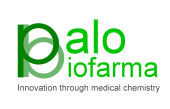Article
作者: Goruganthu, Mounika Uttam L ; Owen, Dwight H ; Ryzhov, Sergey V ; Evans, Jason V ; Piao, Longzhu ; Wei, Lai ; Ilgisonis, Irina ; Dikov, Mikhail M ; Feoktistov, Igor ; Kanagasabai, Thanigaivelan ; Suman, Shankar ; Park, Kyungho P ; Shanker, Anil ; Arasada, Rajeswara Rao ; Amann, Joseph ; Tchekneva, Elena E ; Spakowicz, Daniel J ; Novitskiy, Sergey V ; Kikuchi, Takefumi ; Guan, Shuxiao ; Hoyd, Rebecca ; Uzhachenko, Roman V ; Ivanova, Alla V ; Antonucci, Anneliese ; Driesschaert, Benoit ; Khramtsov, Valery V ; Samouilov, Alexandre ; Castro, Julio ; Bobko, Andrey A ; Carbone, David P ; Wu, Ruohan ; Zweier, Jay L ; Pallerla, Aaditya
Background:We investigated the role of A2B-adenosine receptor in regulating immunosuppressive metabolic stress in the tumor microenvironment. Novel A2B-adenosine receptor antagonist PBF-1129 was tested for antitumor activity in mice and evaluated for safety and immunologic efficacy in a phase I clinical trial of patients with non-small cell lung cancer.
Methods:The antitumor efficacy of A2B-adenosine receptor antagonists and their impact on the metabolic and immune tumor microenvironment were evaluated in lung, melanoma, colon, breast, and epidermal growth factor receptor–inducible transgenic cancer models. Employing electron paramagnetic resonance, we assessed changes in tumor microenvironment metabolic parameters, including pO2, pH, and inorganic phosphate, during tumor growth and evaluated the immunologic effects of PBF-1129, including its pharmacokinetics, safety, and toxicity, in patients with non-small cell lung cancer.
Results:Levels of metabolic stress correlated with tumor growth, metastasis, and immunosuppression. Tumor interstitial inorganic phosphate emerged as a correlative and cumulative measure of tumor microenvironment stress and immunosuppression. A2B-adenosine receptor inhibition alleviated metabolic stress, downregulated expression of adenosine-generating ectonucleotidases, increased expression of adenosine deaminase, decreased tumor growth and metastasis, increased interferon γ production, and enhanced the efficacy of antitumor therapies following combination regimens in animal models (anti–programmed cell death 1 protein vs anti–programmed cell death 1 protein plus PBF-1129 treatment hazard ratio = 11.74 [95% confidence interval = 3.35 to 41.13], n = 10, P < .001, 2-sided F test). In patients with non-small cell lung cancer, PBF-1129 was well tolerated, with no dose-limiting toxicities; demonstrated pharmacologic efficacy; modulated the adenosine generation system; and improved antitumor immunity.
Conclusions:Data identify A2B-adenosine receptor as a valuable therapeutic target to modify metabolic and immune tumor microenvironment to reduce immunosuppression, enhance the efficacy of immunotherapies, and support clinical application of PBF-1129 in combination therapies.







